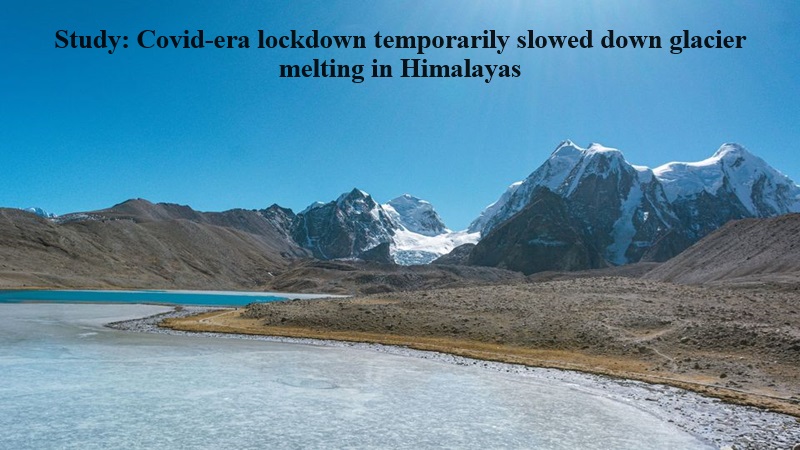
The COVID-19 lockdown period, marked by reduced air pollution levels due to industrial shutdowns and decreased transportation, has been found to have a significant impact on protecting Himalayan glaciers, according to a new study. The closure of industries, transportation, and aviation during the lockdown resulted in cleaner air and a reduction in pollutants. This, in turn, led to less soot deposition on the glaciers, resulting in 0.5 to 1.5 mm less snow melting per day, as revealed by the study published in the journal Atmospheric Chemistry and Physics.
The study suggests that if humanity can maintain air pollution levels at those observed during the lockdown, it could help protect Himalayan glaciers from further deterioration by the end of the century.
The Hindu Kush Himalayas (HKH) and the Tibetan highlands in Central Asia make up the largest snow-covered region outside the polar areas. Melting water from these glaciers is essential for sustaining agriculture, hydropower generation, and the economies of countries like India and China, which rely on the rivers fed by these glaciers.
During spring, the Himalayan snowmelt contributes approximately half of the annual freshwater supply for around 4 billion people in South Asia and East Asia. However, global warming has led to a 40 percent reduction in the Himalayan glacier area compared to the Little Ice Age in the Middle Ages.
The overall snow mass in the region, except for a few Karakoram glaciers, has significantly declined over the past three decades. Model simulations for extreme scenarios suggest that Himalayan glaciers may disappear by the end of the 21st century due to melting snow—a critical concern for the water supply of billions.
Apart from climate change-induced factors like higher air temperatures and alterations in precipitation, short-term factors, such as the distribution and deposition of light-absorbing particles like dust and soot (black carbon), also contribute significantly to glacier melting. Previous research has highlighted the pronounced impact of soot on glacier snowmelt, surpassing the impact of greenhouse gases in the atmosphere. The increased energy demand in densely populated South Asia has led to higher emissions of greenhouse gases and soot particles, intensifying the darkening and melting of snow in the region.

Post Your Comments